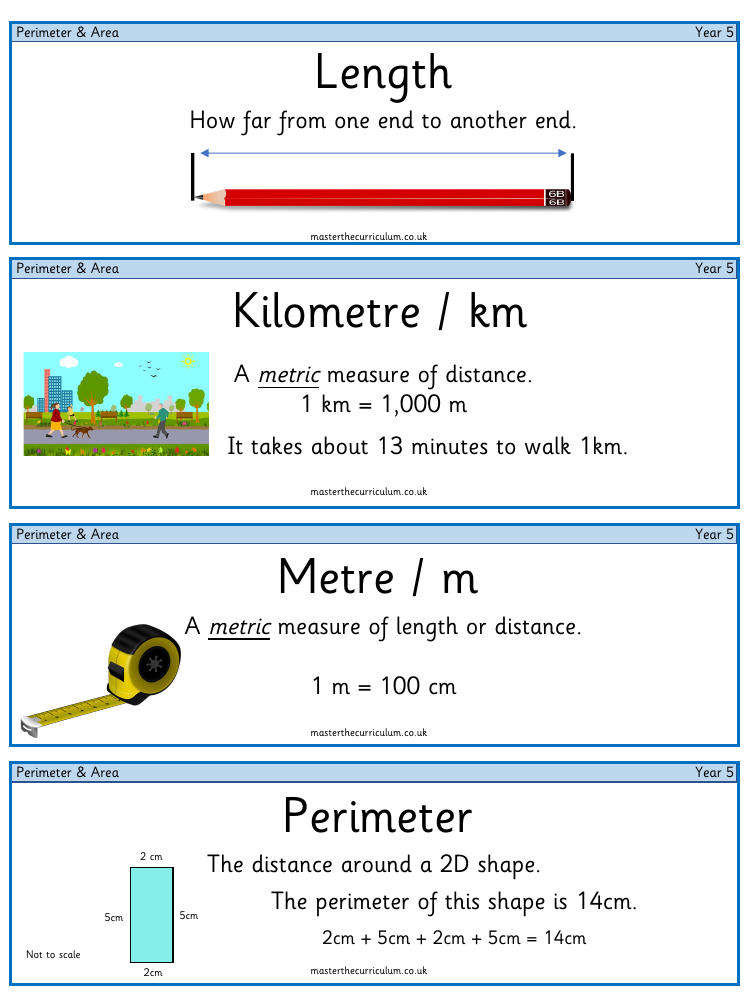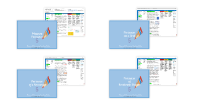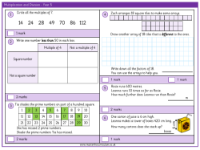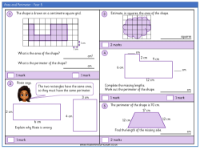Perimeter and Area - Vocabulary

Maths Resource Description
The educational material provided delves into various mathematical concepts related to perimeter and area, tailored for Year 5 students. It begins by defining 'Length' as the measure from one end to another, with 'Metre' (m) and 'Kilometre' (km) being units of this measurement, where 1 km equals 1,000 m. The 'Perimeter' is explained as the total distance around a two-dimensional shape, demonstrated with an example where the perimeter of a simple shape is calculated by summing the lengths of its sides. Students are also introduced to the 'Grid' system, which consists of horizontal and vertical lines crossing each other, and the term 'Rectilinear', referring to figures with straight edges that meet at right angles.
The concept of 'Width' is described as the measurement of how wide a shape is, while 'Dimension' refers to a measurement of length in one direction. The material further explains that a line has one dimension, a rectangle two, and a cuboid three (width, depth, and height). 'Area' is defined as the amount of space on a flat surface, and students learn the formula for calculating it by multiplying width by height. To find the area of compound or composite shapes, which are made up of two or more simple shapes, the suggestion is to split the shape and calculate the area of each part. For irregular shapes, the area can be approximated by estimating the coverage of part-filled squares on a grid. The term 'Approximate' is described as a value that is not completely accurate but close enough for practical use.



